When is the best time to visit China?
17.06.2019 | updated: 16.03.2023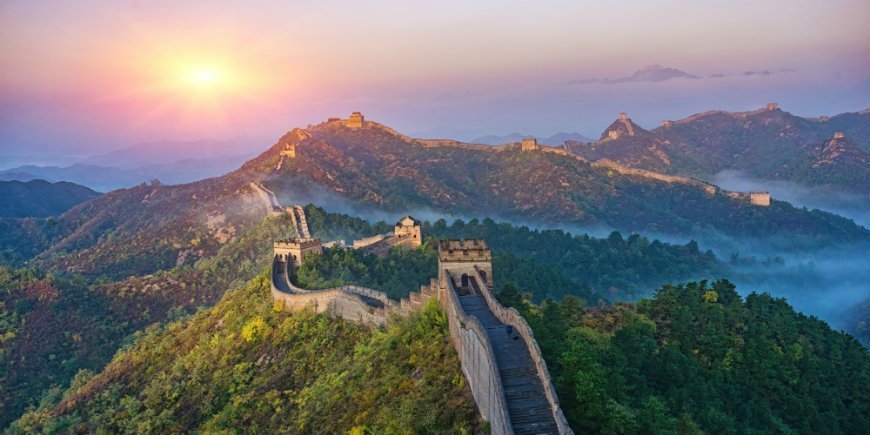
China is a travel destination like non other.
The culture, history and nature are quite unique.
But when is the best time to visit China?
Below, you can read more about the weather and climate in China, and find an answer to when it is the best time for you to visit the vast country in the East.
The Chinese climate
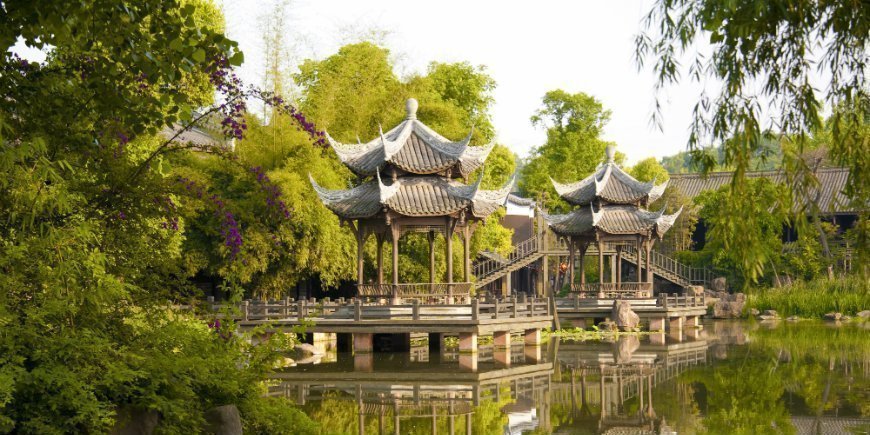
China is one of the world’s largest countries, so there are significant differences in the climate depending on where in the country you are.
Generally speaking, China’s months can be divided into four seasons just as we do in the UK: spring, summer, autumn and winter.
- Spring is from March to May
- Summer is from June to August
- Autumn is from September to October
- Winter is from November to February
The seasons fall more or less as described, but the length and period can shift according to which cities you are talking about. This is due, among other things, to the geographical location of the cities.
So when is the best time to visit China?
China is a year-round destination that offers fantastic experiences in all 12 months of the year.
Spring and autumn are generally considered to be some of the best times to visit China, naturally with regional differences. In these months, the temperatures are generally milder and it rains very little. But if you don’t mind the summer heat or the cold of the winter, these months also have a lot to offer.
However, you should be aware of the Chinese festivals, such as the Chinese New Year, when the Chinese themselves are on holiday. During these periods, the Chinese travel a great deal themselves, which puts extra pressure on public transport and hotels.
The year-round weather in the Chinese cities
As mentioned, the climate and weather may vary depending on the areas you visit. Below, you can read about the seasons in selected Chinese cities.
Beijing
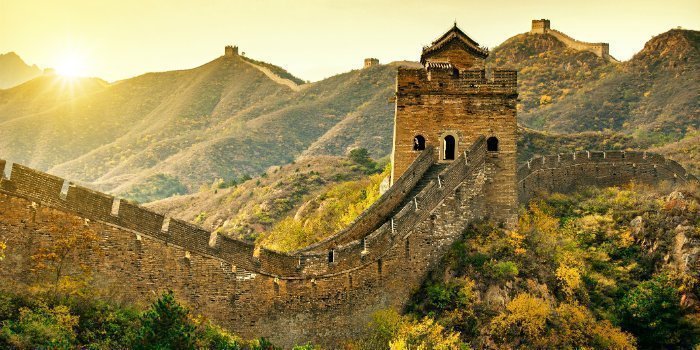
The capital, which is located in the northern part of the country, has a temperate climate.
- Spring is characterised by predominantly pleasant daytime temperatures of an average of up to 11 degrees in March to 26 degrees in May. Very little rain falls at this time of the year. Note, however, that night-time temperatures can drop below freezing, and there is a risk of occasional sandstorms. In the spring months, the amazing nature begins to burst forth in all the colours of the rainbow, adorning the Great Wall, for example, in beautiful shades.
- Summer brings the year’s highest temperatures, high humidity and the year’s heaviest rain. And it can get really hot in Beijing! The daytime temperatures are up to 30 degrees on average, and the metropolis can be a bit of a trial on occasions when the temperatures reach 40 degrees! On the other hand, the Great Wall is a stunning experience when the sky is blue. At the end of May/early June, the Dragon Boat Festival is also an experience.
- Autumn again offers mild temperatures, plenty of sunshine and far less rain than in the summer. What is especially wonderful about this season is nature’s play of colours. Picture, for example, the Summer Palace or other Beijing sights enveloped in the warm colours of autumn.
- Winter in Beijing is cold, with the temperature often dropping well below zero. In spite of the cold, winter can be a really beautiful time to visit Beijing’s parks and palaces, which are sometimes covered by snow. The cold also helps refresh the sometimes heavily polluted air.
| Weather statistics for Beijing: | JAN | FEB | MAR | APR | MAY | JUN | JUL | AUG | SEP | OCT | NOV | DEC |
| Average maximum temperature | 2 | 4 | 11 | 20 | 26 | 30 | 31 | 30 | 26 | 19 | 10 | 3 |
| Average minimum temperature | -9 | -7 | -1 | 7 | 13 | 18 | 22 | 20 | 14 | 7 | 0 | -7 |
| Rainfall mm | 3 | 6 | 9 | 26 | 29 | 71 | 176 | 182 | 49 | 19 | 6 | 2 |
Xi’an
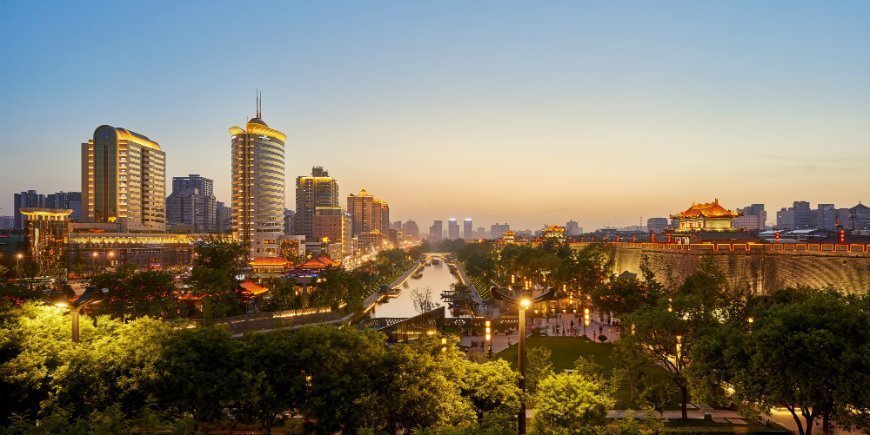
Xi’an, which is especially famous for its fascinating terracotta warriors, is located south-west of Beijing in Shaanxi Province. Xi’an enjoys a temperate climate, and the weather is similar to Beijing.
- Spring offers mild temperatures and very little rain. Here, too, you should be aware that it can get cold at night, especially in March and April, and there is a risk of occasional sandstorms. The season is lovely for a bike ride along the 14 km city wall, for example.
- Summer is hot and may well leave you with sweat on your brow, with daily temperatures that can reach 40 degrees, high humidity and heavy rain. July and August are also two of the year’s most rainy months.
- Autumn is cooler, with temperatures again dropping to a more comfortable level. Early autumn offers average daytime temperatures of up to 25 degrees in September, dropping to up to 12 degrees in November. September is also one of Xi’an’s wettest months, drying up somewhat in the rest of autumn. In the autumn, Mother Nature begins to dress herself in autumn shades, and it’s a great time to visit Xi’an.
- Winter offers the coldest months of the year, when the temperature can easily drop below zero, possibly with the arrival of snow and fog. The highlight of the winter months is the Lantern Festival, which creates a unique atmosphere in the city.
| Weather statistics for Xi’an: | JAN | FEB | MAR | APR | MAY | JUN | JUL | AUG | SEP | OCT | NOV | DEC |
| Average maximum temperature | 5 | 8 | 13 | 21 | 26 | 30 | 31 | 30 | 25 | 20 | 12 | 6 |
| Average minimum temperature | -4 | -2 | 3 | 9 | 14 | 19 | 21 | 20 | 16 | 10 | 3 | -3 |
| Rainfall mm | 10 | 10 | 40 | 40 | 70 | 60 | 100 | 70 | 110 | 60 | 20 | 10 |
Shanghai
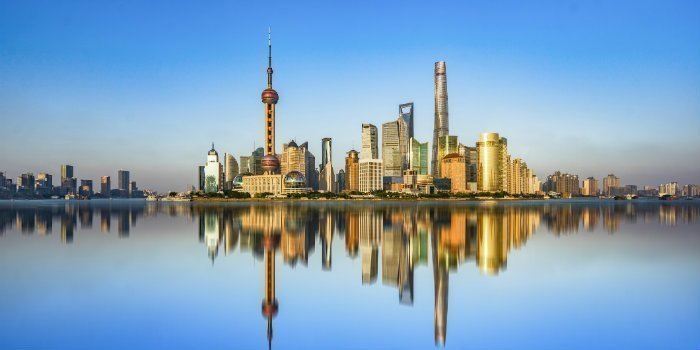
Shanghai is located on the coast of eastern China. The metropolis lies in the subtropical climate belt, making it warmer than Beijing and Xi’an.
The seasons are, however, reminiscent of Beijing in many ways, but Shanghai does not get as cold as Beijing in the winter months.
- Spring has mild to warm daytime temperatures of up to 24 degrees on average when we hit May. Spring also offers slightly milder nights than in Beijing and Xi’an, for example. The closer we get to the summer, the more it begins to rain.
If you travel in the spring, you may be lucky enough to experience the cherry blossom, which typically starts in March.
- Summer brings both hot temperatures and rain, and July and August are the hottest months with average daytime temperatures reaching up to 32 degrees. Rain showers can arrive from one moment to the next, so it’s a good idea to be prepared. In around the beginning of June, which enjoys the summer’s most comfortable temperatures, the Dragon Boat Festival is held, when, for example, you will see colourful boats on the Suzhou River.
- Autumn starts off hot with average temperatures of up to 27 degrees in September, dropping to a more comfortable level as the season progresses. You can generally expect sunny, dry weather, but you should be aware that there may be sudden changes in temperature during the course of a day. In September, for example, you can experience the unique Mid-Autumn Festival, which is all about cakes. In October, nature begins to transform, and the beautiful autumn colours gradually start to paint the metropolis in shades of yellow, red and brown.
- Winter offers the coldest weather of the year, although it can start out mild in November, with temperatures of up to 17 degrees. But it can get really cold due to the wind from the north. While night temperatures often drop below zero, it rarely snows in Shanghai. And there is very little rain during the winter months.
| Weather statistics for Shanghai: | JAN | FEB | MAR | APR | MAY | JUN | JUL | AUG | SEP | OCT | NOV | DEC |
| Average maximum temperature | 8 | 9 | 13 | 19 | 24 | 27 | 32 | 32 | 27 | 22 | 17 | 11 |
| Average minimum temperature | 0 | 2 | 5 | 11 | 16 | 20 | 25 | 25 | 20 | 15 | 9 | 2 |
| Rainfall mm | 39 | 59 | 81 | 102 | 115 | 152 | 128 | 133 | 156 | 61 | 51 | 35 |
Chengdu
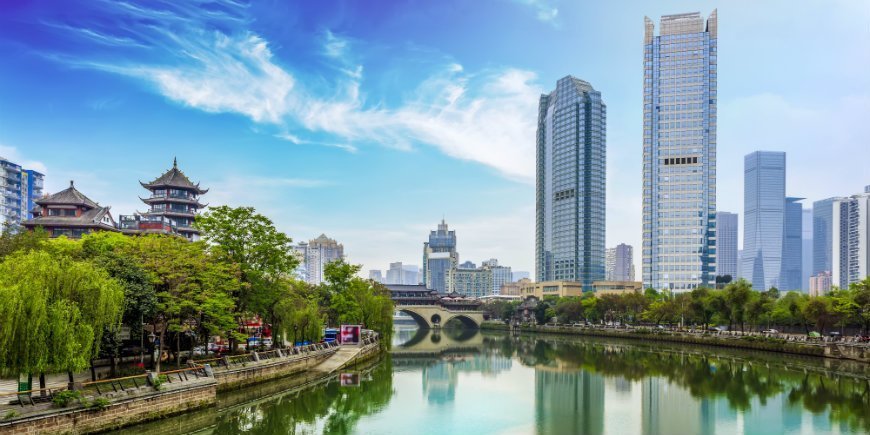
Chengdu is located in south-west China in Sichuan Province – in the sub-tropical climate belt.
The climate in Chengdu is mild, with relatively pleasant temperatures, even in the winter.
- Spring starts out mild, getting hotter as the months progress. But you should be prepared for the weather to be changeable, and possibly chilly on some days. On the other hand, it’s a great time to experience the surroundings, which are becoming greener as the plants begin to bloom.
- Summer brings Chengdu’s hottest – and wettest – weather. It can be muggy in July and August, when daytime temperatures can creep up to almost 30 degrees. If you want to see the pandas at Chengdu Panda Base, it’s best to visit when it’s not as hot. During the summer, the pandas spend a lot of time in a cool room rather than out in the gardens.
- Autumn starts out hot, unlike spring, with average daytime temperatures up to 25 degrees. But the temperatures constantly drop to a more comfortable level, and in November, you can enjoy daytime temperatures of around 15 degrees. In the autumn, you should also expect changeable weather – from one moment to the next! On the other hand, it is one of the most beautiful times to experience Chengdu’s amazing scenery, which is particularly beautiful at this time of the year.
- Winter is mild, dry and often cloudy and foggy. It’s not as cold as elsewhere, but the humidity can make it feel colder than it actually is. On the plus side, there is very little rain.
| Weather statistics for Chengdu: | JAN | FEB | MAR | APR | MAY | JUN | JUL | AUG | SEP | OCT | NOV | DEC |
| Average maximum temperature | 10 | 11 | 15 | 21 | 26 | 28 | 29 | 29 | 25 | 21 | 16 | 11 |
| Average minimum temperature | 3 | 5 | 8 | 12 | 17 | 21 | 22 | 22 | 18 | 15 | 10 | 4 |
| Rainfall mm | 10 | 20 | 20 | 50 | 100 | 110 | 200 | 190 | 130 | 40 | 20 | 10 |
China is a country that has something for everyone.
A fascinating, breathtaking and wonderful travel destination.
Still not sure when to visit China? Then feel free to contact our travel consultants who are on hand to help you off on a fantastic dream tour to China.
Please note: The above guide is indicative, and recommendations may change.
TourCompass – From tourist to traveller
